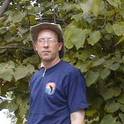
Many forested areas have been converted to intensive agricultural use to satisfy food, fiber, and forage production for a growing world population. There is great interest in evaluating forest conversion to cultivated land because this conversion adversely affects several soil properties. We examined soil microbial, physical, and chemical properties in an Oxisol (Latossolo Vermelho distrófico) of southern Brazil 24 years after forest conversion to a perennial crop with coffee or annual grain crops (maize and soybeans) in conventional tillage or no-tillage. One goal was to determine which soil quality parameters seemed most sensitive to change. A second goal was to test the hypothesis that no-tillage optimized preservation of soil quality indicators in annual cropping systems on converted land. Land use significantly affected microbial biomass and its activity, C and N mineralization, and aggregate stability by depth. Cultivated sites had lower microbial biomass and mineralizable C and N than a forest used as control. The forest and no-tillage sites had higher microbial biomass and mineralizable C and N than the conventional tillage site, and the metabolic quotient was 65 and 43 % lower, respectively. Multivariate analysis of soil microbial properties showed a clear separation among treatments, displaying a gradient from conventional tillage to forest. Although the soil at the coffee site was less disturbed and had a high organic C content, the microbial activity was low, probably due to greater soil acidity and Al toxicity. Under annual cropping, microbial activity in no-tillage was double that of the conventional tillage management. The greater microbial activity in forest and no-tillage sites may be attributed, at least partially, to lower soil disturbance. Reducing soil disturbance is important for soil C sequestration and microbial activity, although control of soil pH and Al toxicity are also essential to maintain the soil microbial activity high.
E. L. B. acknowledges CNPq - Conselho Nacional de Desenvolvimento Científico e Tecnológico (National Counsel of Technological and Scientific Development) and the Program Science without Borders, for a postdoctoral fellowship at the University of Kentucky, United States (Process 201930/2012-9).
Available at: http://works.bepress.com/markcoyne/68/

Published in Revista Brasileira de Ciência do Solo, v. 39, no. 4, p. 1003-1014.
This is an Open Access article distributed under the terms of the Creative Commons Attribution License, which permits unrestricted use, distribution, and reproduction in any medium, provided the original work is properly cited.